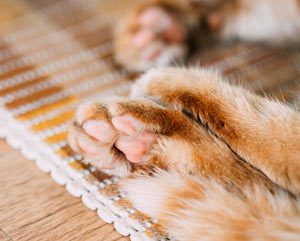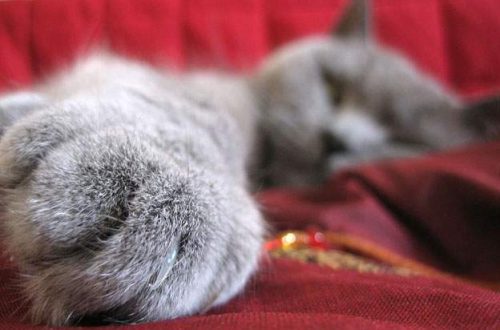
Do cats sweat?
What happens to us when we sweat? The sweat glands secrete moisture, which, when evaporated, removes heat from the surface of the skin and causes cooling. Such a heat transfer mechanism saves the body from overheating and allows us to stay in the sun or in a stuffy room for a long time without harm to health. But have you ever seen a sweaty cat at least once? We think the answer will be negative, because freedom-loving little predators have their own methods of regulating temperature in the body.
Cats have virtually no sweat glands (except in the areas of the lips, cheeks, around the nipples, anus, and on the pads of their paws), so their bodies cannot generate heat through sweat. This anatomy is also characteristic of dogs. However, unlike their purring comrades, dogs are not at all embarrassed by this feature of the body, and often they run in the heat with the same enthusiasm as in the cool. But what happens to a dog when it gets hot? That’s right, she sticks out her tongue and begins to breathe quickly and deeply. In this way, the temperature in her body is regulated. But the cat behaves completely differently.
Firstly, she instinctively avoids overheating and does her best not to be in the sun for a long time. Pay attention to the behavior of your pet: she never runs or plays in extreme heat, and in a stuffy room she finds the coolest place. Preferring to conserve energy, the cat always takes a position that excludes overheating. That is, the regulation of the body temperature of cunning pets occurs through the choice of a comfortable place. Yes, on a warm day, cats love to lounge on the windowsill in the sun, but from time to time they will definitely go into the shade to stabilize the temperature. Thus, the cat’s body maintains a relatively low metabolic rate and avoids overheating.
The position of the animal during rest and sleep is a clue to its perception of ambient temperature. When a cat is cold, it curls up into a ball; when it is hot, it stretches out. A kind of personal thermometer is her nose and upper lip, they are sensitive to the smallest temperature fluctuations.
If a cat is forced to stay in a hot room for a long time, she becomes very ill. She gasps for air convulsively, her breathing becomes very fast, her eyes are wide open, her heart rate is increased. That is why when transporting a cat during the hot months, it is so important not to leave it for a long time in a closed car, because it is very difficult to tolerate overheating.
Interestingly, with all their sensitivity to high temperatures, pets can quite easily walk on heated surfaces (for example, roofs), which we would be able to do only with shoes.





